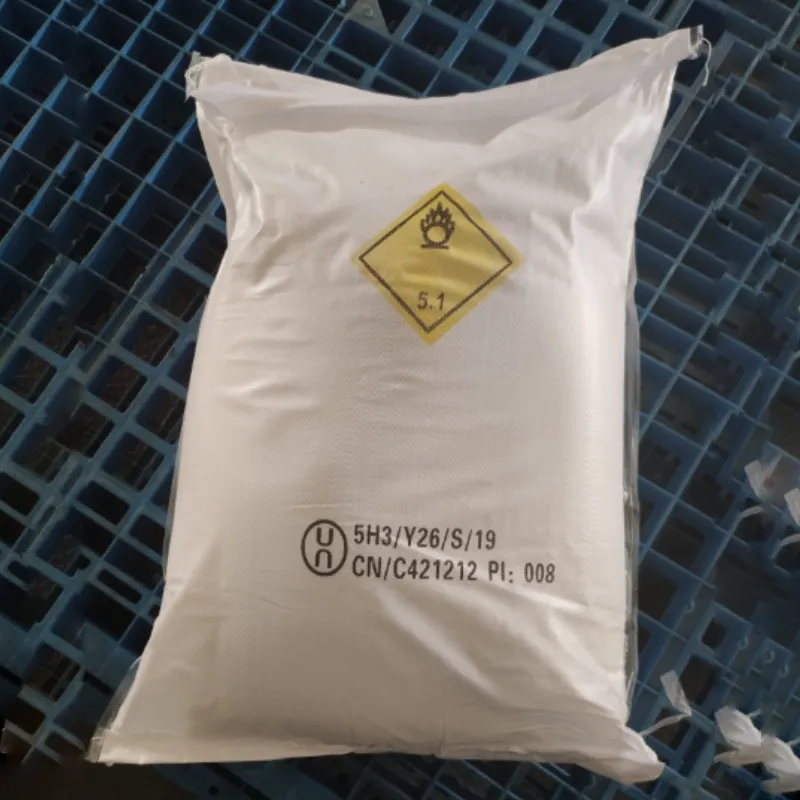
Understanding the Benefits and Uses of Diammonium Phosphate Fertilizer in Agriculture
The Role of Diammonium Phosphate Fertilizer in Agriculture
Diammonium phosphate (DAP) is one of the most widely used fertilizers in the world, playing a significant role in modern agricultural practices. As a water-soluble phosphate fertilizer, it provides essential nutrients that promote plant growth, particularly in nitrogen and phosphorus. Understanding the benefits, application, and environmental considerations of DAP can help farmers optimize their crop yields and contribute to sustainable agriculture.
Nutrient Composition
DAP consists of approximately 18% nitrogen and 46% phosphorus in the form of P2O5, making it a highly concentrated fertilizer. The combination of nitrogen and phosphorus is crucial for plant development. Nitrogen promotes vigorous vegetative growth, while phosphorus enhances root establishment, flowering, and fruiting. This dual nutrient profile makes DAP especially effective for crops that require significant nutrient inputs at various growth stages, such as corn, wheat, and soybeans.
Benefits of Using DAP
1. Improved Crop Yields The application of DAP has been associated with increased crop productivity. It facilitates early root development, leading to better nutrient and water uptake. This is particularly important in nutrient-deficient soils where crops may struggle to establish.
2. Versatile Application DAP can be applied in various ways, including broadcasting, banding, or as a seed starter fertilizer. This versatility allows farmers to adapt their fertilization strategies based on the crop type, soil conditions, and farming practices.
3. Compatibility with Other Fertilizers DAP is often used in combination with other fertilizers to create balanced nutrient blends. This allows farmers to tailor their fertilization programs to meet specific crop needs, enhancing efficiency and cost-effectiveness.
diammonium phosphate fertilizer

Considerations for Application
While DAP is advantageous, careful consideration must be given to its application to maximize benefits and mitigate potential drawbacks. Over-application can lead to nutrient runoff, which can harm aquatic ecosystems and contribute to water quality issues such as eutrophication. To prevent such scenarios, farmers should conduct soil tests to determine existing nutrient levels and apply DAP according to recommended rates.
Moreover, the timing of DAP application is crucial. It is most effective when applied during the planting stage or shortly after seed emergence. This ensures that the nutrients are readily available to the seedlings during their critical early growth phase.
Environmental Impact
The use of DAP, like any fertilizer, comes with environmental responsibilities. As it contains high levels of phosphorus, there is a risk of accumulation in water bodies, leading to algal blooms that deplete oxygen levels and harm aquatic life. To minimize this risk, best management practices (BMPs) should be adopted. These include optimized application rates, using buffer zones to protect waterways, and employing precision agriculture techniques to apply fertilizers more accurately.
Farmers are also encouraged to consider integrated nutrient management approaches that combine organic and inorganic fertilizers. This can improve soil health, enhance biodiversity, and reduce dependence on chemical inputs.
Conclusion
Diammonium phosphate fertilizer is an essential tool in modern agriculture, providing vital nutrients that contribute to increased crop yields and efficient farming practices. However, its use should be carefully managed to balance agricultural productivity with environmental sustainability. By adopting responsible application methods and integrating best practices, farmers can harness the advantages of DAP while minimizing its ecological footprint, fostering a more sustainable agricultural future. Through education and innovation, the agricultural sector can continue to thrive while safeguarding the environment for generations to come.
-
Aluminum Hydroxide: Quality Gels & Dried Gel AntacidNewsAug.31,2025
-
Buy High-Quality Trichloroisocyanuric Acid for Sale | TCCA 90% SupplierNewsAug.30,2025
-
Pure Sodium Dichloroisocyanurate Dihydrate | Powerful DisinfectantNewsAug.29,2025
-
Industrial Chemicals: Quality & Purity for Every IndustryNewsAug.28,2025
-
Nitrile Rubber Honoring Strict Production StandardsNewsAug.22,2025
-
Aspartame Ingredients Honoring Food Safety ValuesNewsAug.22,2025
-
Fertilizer for Balanced Plant NutritionNewsAug.22,2025
Hebei Tenger Chemical Technology Co., Ltd. focuses on the chemical industry and is committed to the export service of chemical raw materials.
-

view more DiethanolisopropanolamineIn the ever-growing field of chemical solutions, diethanolisopropanolamine (DEIPA) stands out as a versatile and important compound. Due to its unique chemical structure and properties, DEIPA is of interest to various industries including construction, personal care, and agriculture. -

view more TriisopropanolamineTriisopropanolamine (TIPA) alkanol amine substance, is a kind of alcohol amine compound with amino and alcohol hydroxyl, and because of its molecules contains both amino and hydroxyl. -

view more Tetramethyl Thiuram DisulfideTetramethyl thiuram disulfide, also known as TMTD, is a white to light-yellow powder with a distinct sulfur-like odor. It is soluble in organic solvents such as benzene, acetone, and ethyl acetate, making it highly versatile for use in different formulations. TMTD is known for its excellent vulcanization acceleration properties, which makes it a key ingredient in the production of rubber products. Additionally, it acts as an effective fungicide and bactericide, making it valuable in agricultural applications. Its high purity and stability ensure consistent performance, making it a preferred choice for manufacturers across various industries.





